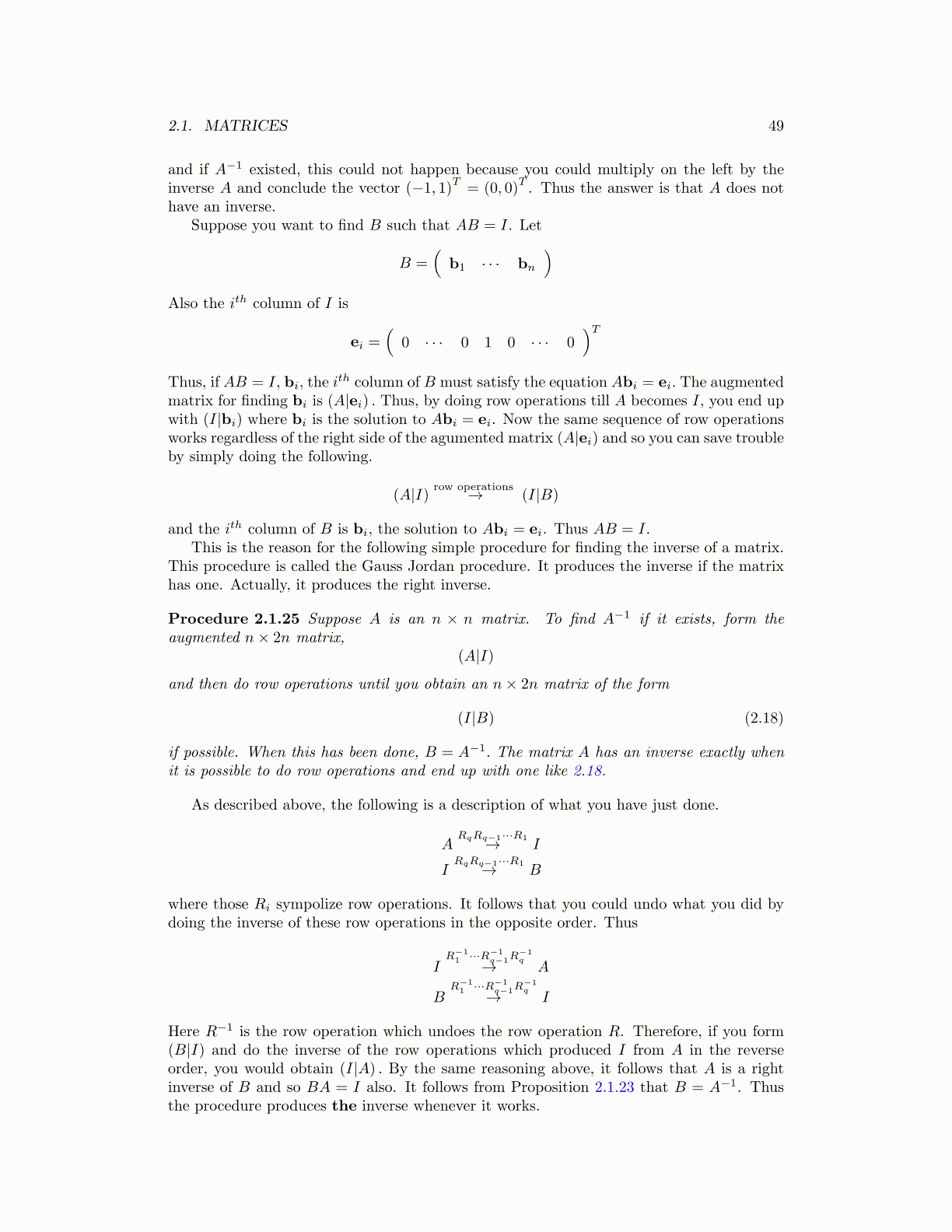
2.1. MATRICES 49
and if A−1 existed, this could not happen because you could multiply on the left by theinverse A and conclude the vector (−1, 1)
T= (0, 0)
T. Thus the answer is that A does not
have an inverse.Suppose you want to find B such that AB = I. Let
B =(
b1 · · · bn
)Also the ith column of I is
ei =(
0 · · · 0 1 0 · · · 0)T
Thus, if AB = I, bi, the ith column of B must satisfy the equation Abi = ei. The augmented
matrix for finding bi is (A|ei) . Thus, by doing row operations till A becomes I, you end upwith (I|bi) where bi is the solution to Abi = ei. Now the same sequence of row operationsworks regardless of the right side of the agumented matrix (A|ei) and so you can save troubleby simply doing the following.
(A|I) row operations→ (I|B)
and the ith column of B is bi, the solution to Abi = ei. Thus AB = I.This is the reason for the following simple procedure for finding the inverse of a matrix.
This procedure is called the Gauss Jordan procedure. It produces the inverse if the matrixhas one. Actually, it produces the right inverse.
Procedure 2.1.25 Suppose A is an n × n matrix. To find A−1 if it exists, form theaugmented n× 2n matrix,
(A|I)
and then do row operations until you obtain an n× 2n matrix of the form
(I|B) (2.18)
if possible. When this has been done, B = A−1. The matrix A has an inverse exactly whenit is possible to do row operations and end up with one like 2.18.
As described above, the following is a description of what you have just done.
ARqRq−1···R1→ I
IRqRq−1···R1→ B
where those Ri sympolize row operations. It follows that you could undo what you did bydoing the inverse of these row operations in the opposite order. Thus
IR−1
1 ···R−1q−1R
−1q→ A
BR−1
1 ···R−1q−1R
−1q→ I
Here R−1 is the row operation which undoes the row operation R. Therefore, if you form(B|I) and do the inverse of the row operations which produced I from A in the reverseorder, you would obtain (I|A) . By the same reasoning above, it follows that A is a rightinverse of B and so BA = I also. It follows from Proposition 2.1.23 that B = A−1. Thusthe procedure produces the inverse whenever it works.